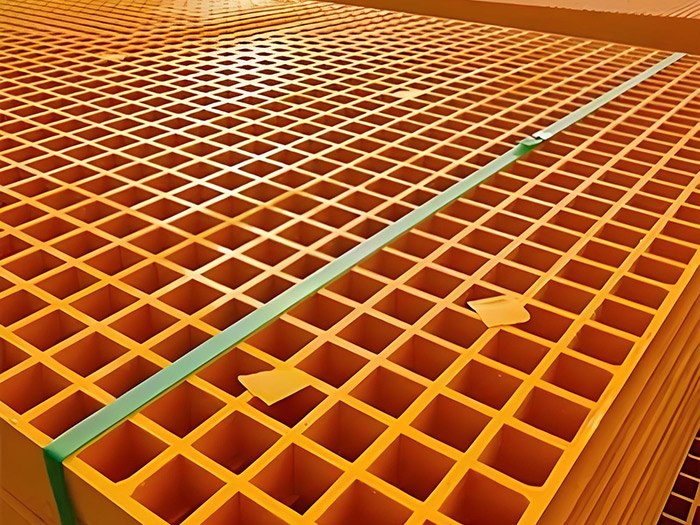Travi a I in FRP per centrali elettriche: Migliorare l'integrità strutturale delle strutture energetiche

Le centrali elettriche sono la spina dorsale delle moderne infrastrutture energetiche e garantiscono una fornitura costante di elettricità per soddisfare la domanda globale. Tuttavia, questi impianti operano in condizioni estreme, esponendo i loro componenti strutturali a stress, corrosione e usura costanti. Per mantenere la sicurezza, l'efficienza e la longevità, le centrali elettriche devono investire in materiali resistenti e ad alte prestazioni. Una di queste innovazioni è la trave I in polimero rinforzato con fibre (FRP), una soluzione all'avanguardia progettata per migliorare l'integrità strutturale degli impianti energetici.
Cosa sono le travi a I in FRP e perché sono essenziali per le centrali elettriche?
Le travi FRP I sono strutture composite realizzate con fibre (come carbonio o vetro) rinforzate con una matrice polimerica. A differenza delle tradizionali travi in acciaio, le travi in FRP offrono un rapporto forza-peso superiore, resistenza alla corrosione e proprietà di isolamento elettrico. Queste caratteristiche le rendono ideali per le centrali elettriche, dove l'affidabilità strutturale è fondamentale.
Vantaggi principali delle travi a I in FRP nelle centrali elettriche:
– Resistenza alla corrosione: Le centrali elettriche sono spesso esposte ad ambienti difficili, come umidità, sostanze chimiche e temperature elevate. Le travi in FRP resistono alla corrosione, prolungando la vita utile senza bisogno di frequenti interventi di manutenzione.
– Leggero ma resistente: Le travi in FRP sono più leggere dell'acciaio, riducendo le sollecitazioni sulle fondazioni e migliorando l'efficienza dell'installazione.
– Isolamento elettrico: L'FRP non conduce l'elettricità e quindi può essere utilizzato in prossimità di apparecchiature ad alta tensione senza il rischio di cortocircuiti.
– Resistenza alla fatica: Le strutture energetiche sono sottoposte a continue sollecitazioni meccaniche. Le travi in FRP resistono alla fatica meglio dei materiali convenzionali, riducendo il rischio di crepe o cedimenti.
Sfide nella costruzione e manutenzione delle centrali elettriche
Nonostante i progressi nella scienza dei materiali, le centrali elettriche devono ancora affrontare problemi di integrità strutturale, tra cui:
– Condizioni ambientali estreme: L'esposizione all'acqua salata, agli inquinanti industriali e allo stress termico può degradare i materiali tradizionali.
– Vincoli di peso: Le pesanti travi in acciaio possono richiedere fondazioni rinforzate, aumentando i costi di costruzione.
– Costi di manutenzione: Le ispezioni e le riparazioni periodiche di travi corrose o indebolite sono costose e dispendiose.
Le travi FRP I affrontano questi problemi fornendo una soluzione a lungo termine ed economicamente vantaggiosa. La loro durata riduce al minimo le esigenze di manutenzione, mentre il loro design leggero semplifica il trasporto e l'installazione.
In che modo le travi FRP I migliorano la sicurezza e l'efficienza?
Negli impianti energetici, i cedimenti strutturali possono portare a conseguenze catastrofiche, tra cui interruzioni di corrente e danni alle apparecchiature. Le travi FRP I aumentano la sicurezza grazie a:
– Riduzione del rischio di crollo: L'elevata resistenza e stabilità garantiscono un'affidabilità a lungo termine.
– Migliorare la distribuzione del carico: La distribuzione uniforme del peso evita punti di stress localizzati.
– Facilitare la costruzione modulare: Le travi in FRP possono essere prefabbricate, velocizzando l'assemblaggio e riducendo la manodopera in loco.
Caso di studio: Travi in FRP nelle centrali nucleari
Le centrali nucleari richiedono i massimi livelli di integrità strutturale a causa degli ambienti pericolosi in cui operano. Uno studio recente ha dimostrato che le travi a I in FRP in un impianto nucleare costiero hanno ridotto le riparazioni dovute alla corrosione di 70% in cinque anni rispetto alle travi in acciaio. Inoltre, il peso ridotto ha permesso di risparmiare 20% sui costi di fondazione.
Condividete questo approfondimento con i professionisti del settore
Se siete coinvolti nella costruzione o nella manutenzione di una centrale elettrica, prendete in considerazione le travi FRP I come soluzione all'avanguardia. La durata, l'efficienza e i vantaggi in termini di sicurezza ne fanno una soluzione innovativa per le moderne infrastrutture energetiche.
Conclusione
Le travi FRP I stanno rivoluzionando il settore dell'energia, fornendo prestazioni strutturali ineguagliabili nelle centrali elettriche. Con l'aumento della domanda di infrastrutture sostenibili e resilienti, queste travi in composito svolgeranno un ruolo fondamentale nel garantire il funzionamento sicuro ed efficiente degli impianti energetici per i decenni a venire.
Adottando la tecnologia FRP, le centrali elettriche possono migliorare la loro longevità, ridurre i costi operativi e soddisfare le esigenze in continua evoluzione del settore energetico. Il futuro dell'integrità strutturale degli impianti energetici risiede in materiali innovativi come le travi a I in FRP.







